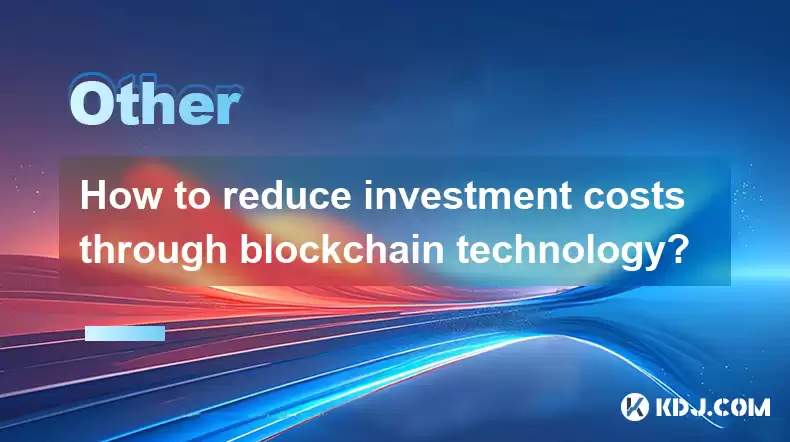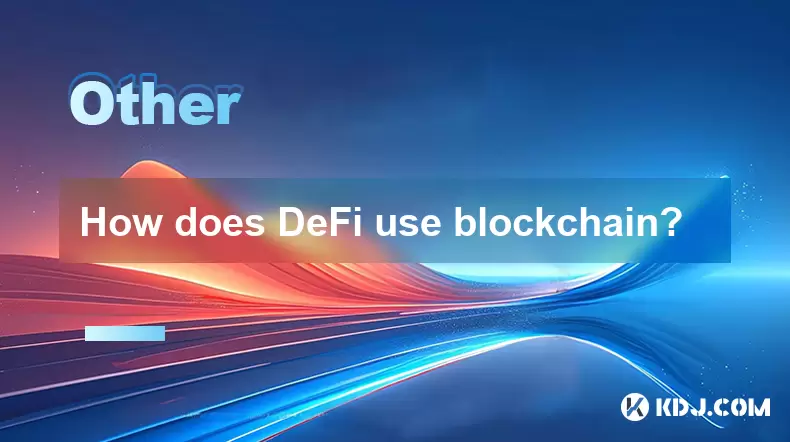-
 Bitcoin
Bitcoin $114400
1.70% -
 Ethereum
Ethereum $3501
3.13% -
 XRP
XRP $2.918
4.28% -
 Tether USDt
Tether USDt $0.9999
0.02% -
 BNB
BNB $753.8
2.00% -
 Solana
Solana $162.1
2.74% -
 USDC
USDC $0.9998
0.00% -
 TRON
TRON $0.3262
1.30% -
 Dogecoin
Dogecoin $0.1992
3.24% -
 Cardano
Cardano $0.7255
4.15% -
 Hyperliquid
Hyperliquid $38.54
5.34% -
 Stellar
Stellar $0.3965
7.51% -
 Sui
Sui $3.452
3.84% -
 Chainlink
Chainlink $16.29
4.05% -
 Bitcoin Cash
Bitcoin Cash $542.0
2.99% -
 Hedera
Hedera $0.2480
8.54% -
 Ethena USDe
Ethena USDe $1.001
0.04% -
 Avalanche
Avalanche $21.46
1.98% -
 Toncoin
Toncoin $3.661
3.45% -
 Litecoin
Litecoin $109.0
3.45% -
 UNUS SED LEO
UNUS SED LEO $8.961
-0.04% -
 Shiba Inu
Shiba Inu $0.00001223
3.33% -
 Polkadot
Polkadot $3.605
3.01% -
 Uniswap
Uniswap $9.167
4.19% -
 Monero
Monero $300.4
3.45% -
 Dai
Dai $1.000
-0.01% -
 Bitget Token
Bitget Token $4.329
2.11% -
 Pepe
Pepe $0.00001050
4.49% -
 Cronos
Cronos $0.1333
6.34% -
 Aave
Aave $259.0
3.64%
How to reduce investment costs through blockchain technology?
Blockchain technology reduces investment costs by enabling direct peer-to-peer transactions, automating processes with smart contracts, and offering tokenization for fractional asset ownership.
Apr 14, 2025 at 06:50 am

Blockchain technology, known for its decentralized and secure nature, offers several avenues for reducing investment costs. By understanding and leveraging the unique features of blockchain, investors can significantly lower their expenses. This article explores various methods to achieve cost reduction through blockchain technology.
Understanding Blockchain and Its Cost-Saving Potential
Blockchain is a distributed ledger technology that records transactions across numerous computers, ensuring transparency and security. The technology's decentralized nature eliminates the need for intermediaries, which can significantly reduce costs. For instance, traditional financial systems often involve multiple intermediaries such as banks, brokers, and clearinghouses, each charging fees for their services. By using blockchain, these intermediaries can be bypassed, leading to direct peer-to-peer transactions and lower transaction fees.
Moreover, blockchain's smart contract functionality automates many processes that would otherwise require manual intervention. Smart contracts are self-executing contracts with the terms directly written into code. They automatically enforce and execute agreements, reducing the need for legal and administrative costs. This automation can lead to significant savings for investors who frequently engage in contractual agreements.
Reducing Transaction Fees with Decentralized Exchanges
One of the most direct ways to reduce investment costs through blockchain is by using decentralized exchanges (DEXs). Unlike traditional centralized exchanges, DEXs operate without a central authority, allowing users to trade directly with one another. This peer-to-peer model eliminates the need for intermediaries, which can result in lower transaction fees.
To use a DEX and benefit from lower fees, follow these steps:
- Choose a reputable DEX: Research and select a DEX that aligns with your trading needs. Popular options include Uniswap, SushiSwap, and PancakeSwap.
- Connect your wallet: Most DEXs require you to connect a crypto wallet such as MetaMask or Trust Wallet. Ensure your wallet is set up and funded with the necessary cryptocurrencies.
- Navigate to the trading interface: Once connected, navigate to the trading section of the DEX. Here, you can select the tokens you wish to trade.
- Execute the trade: Enter the amount you want to trade and confirm the transaction. The DEX will automatically calculate the best available price and execute the trade, typically with lower fees compared to centralized exchanges.
By utilizing DEXs, investors can save on transaction fees, which can add up significantly over time, especially for frequent traders.
Leveraging Tokenization for Cost-Effective Investments
Tokenization is another powerful feature of blockchain technology that can help reduce investment costs. Tokenization involves converting real-world assets into digital tokens on a blockchain, allowing for fractional ownership and increased liquidity. This process can lower the barriers to entry for investors, reducing the costs associated with investing in high-value assets.
For example, real estate tokenization enables investors to purchase fractions of properties, making real estate investment more accessible and cost-effective. Instead of buying an entire property, investors can buy tokens representing a small portion of the asset, thus reducing the capital required and the associated transaction costs.
To engage in tokenized investments, consider the following steps:
- Research tokenized assets: Identify platforms that offer tokenized assets in sectors you are interested in, such as real estate, art, or commodities.
- Understand the token structure: Learn about the token's underlying asset, the rights it confers, and any associated fees.
- Select a platform and invest: Choose a reputable platform and follow their process for purchasing tokens. This usually involves transferring funds to the platform and selecting the desired tokens.
By investing in tokenized assets, investors can diversify their portfolios at a lower cost, enhancing their overall investment strategy.
Utilizing Blockchain for Cost-Effective Fund Management
Blockchain technology can also streamline fund management, reducing operational costs and increasing efficiency. Traditional fund management involves numerous administrative tasks, such as record-keeping, reporting, and compliance, which can be costly. By using blockchain, these processes can be automated and decentralized, leading to significant cost savings.
For instance, blockchain-based fund management platforms can automate the distribution of dividends and interest, reducing the need for manual processing. Additionally, these platforms can provide real-time transparency into fund operations, minimizing the risk of errors and fraud, which can further reduce costs.
To leverage blockchain for fund management, consider the following steps:
- Choose a blockchain-based fund management platform: Research platforms that offer blockchain-based solutions for fund management. Examples include Polymath and Securitize.
- Set up your account: Register on the platform and complete the necessary KYC/AML processes to comply with regulatory requirements.
- Integrate your funds: Connect your existing funds to the platform, following their guidelines for integration.
- Automate processes: Utilize the platform's automation features to streamline operations such as dividend distribution and reporting.
By adopting blockchain-based fund management, investors can reduce administrative costs and improve the efficiency of their investment operations.
Enhancing Security and Reducing Costs with Blockchain
Security is a critical aspect of investment, and blockchain technology offers robust solutions that can also lead to cost savings. Traditional security measures, such as audits and compliance checks, can be expensive and time-consuming. Blockchain's inherent security features, such as cryptographic encryption and consensus mechanisms, can reduce the need for these traditional measures.
For example, blockchain-based identity verification can streamline the KYC/AML process, reducing the time and cost associated with onboarding new investors. By using decentralized identity solutions, investors can securely verify their identity once and reuse it across multiple platforms, minimizing the need for repetitive and costly verification processes.
To enhance security and reduce costs through blockchain, follow these steps:
- Implement blockchain-based identity solutions: Research and select a decentralized identity platform such as uPort or Civic.
- Set up your digital identity: Create and verify your digital identity on the chosen platform, following their guidelines.
- Integrate with investment platforms: Use your verified digital identity to onboard with investment platforms, reducing the need for repeated KYC/AML processes.
By leveraging blockchain's security features, investors can not only protect their investments but also reduce the associated costs, making their investment strategies more efficient and cost-effective.
Frequently Asked Questions
Q: Can blockchain technology completely eliminate investment costs?
A: While blockchain technology can significantly reduce investment costs, it cannot completely eliminate them. There are still some inherent costs associated with blockchain operations, such as network fees and smart contract execution costs. However, these costs are generally lower compared to traditional financial systems.
Q: Are there any risks associated with using decentralized exchanges for cost reduction?
A: Yes, there are risks associated with DEXs, such as liquidity issues and potential vulnerabilities in smart contracts. However, these risks can be mitigated by choosing reputable DEXs, conducting thorough research, and staying informed about the latest security practices.
Q: How can small investors benefit from tokenization?
A: Small investors can benefit from tokenization by gaining access to high-value assets at a lower cost. Tokenization allows for fractional ownership, enabling small investors to diversify their portfolios and invest in assets that were previously out of reach due to high entry costs.
Q: Is blockchain-based fund management suitable for all types of funds?
A: Blockchain-based fund management is suitable for a wide range of funds, including mutual funds, hedge funds, and private equity funds. However, the suitability depends on the specific needs and regulatory requirements of each fund. It is essential to assess whether the benefits of blockchain align with the fund's operational goals and compliance needs.
Disclaimer:info@kdj.com
The information provided is not trading advice. kdj.com does not assume any responsibility for any investments made based on the information provided in this article. Cryptocurrencies are highly volatile and it is highly recommended that you invest with caution after thorough research!
If you believe that the content used on this website infringes your copyright, please contact us immediately (info@kdj.com) and we will delete it promptly.
- Navigating the Wild West: Token Unlocks and Altcoin Surges - A Trader's Guide
- 2025-08-04 02:30:11
- AI, Crypto, and the Frontier: Riding the Wave of Innovation
- 2025-08-04 03:50:11
- Snorter Presale Fuels Meme Coin Frenzy: Price Explosion Incoming?
- 2025-08-04 02:50:12
- Bitcoin, Altcoins, and Momentum: What's Moving the Crypto Markets?
- 2025-08-04 02:30:11
- Punisher Coin Presale: The Meme Coin Primed to Explode (No Joke!)
- 2025-08-04 03:50:11
- Crypto Analysts' August Picks: Beyond Bitcoin and Ethereum
- 2025-08-04 02:50:12
Related knowledge

What is the difference between on-chain and off-chain transactions?
Aug 02,2025 at 04:22pm
Understanding On-Chain TransactionsOn-chain transactions refer to digital asset transfers that are recorded directly on a blockchain ledger. These tra...

What is a node's role in a blockchain network?
Aug 03,2025 at 03:16pm
Understanding the Function of a Node in a Blockchain NetworkA node is a fundamental component of any blockchain network, acting as a participant that ...

How are transactions verified on a blockchain?
Aug 04,2025 at 12:35am
Understanding the Role of Nodes in Transaction VerificationIn a blockchain network, nodes are fundamental components responsible for maintaining the i...

What is the double-spending problem and how does blockchain prevent it?
Aug 02,2025 at 01:07pm
Understanding the Double-Spending ProblemThe double-spending problem is a fundamental challenge in digital currency systems where the same digital tok...

What is the difference between a blockchain and a database?
Aug 01,2025 at 09:36pm
Understanding the Core Structure of a BlockchainA blockchain is a decentralized digital ledger that records data in a series of immutable blocks linke...

How does DeFi use blockchain?
Aug 03,2025 at 11:15pm
Understanding the Role of Blockchain in DeFiDecentralized Finance (DeFi) relies fundamentally on blockchain technology to operate without intermediari...

What is the difference between on-chain and off-chain transactions?
Aug 02,2025 at 04:22pm
Understanding On-Chain TransactionsOn-chain transactions refer to digital asset transfers that are recorded directly on a blockchain ledger. These tra...

What is a node's role in a blockchain network?
Aug 03,2025 at 03:16pm
Understanding the Function of a Node in a Blockchain NetworkA node is a fundamental component of any blockchain network, acting as a participant that ...

How are transactions verified on a blockchain?
Aug 04,2025 at 12:35am
Understanding the Role of Nodes in Transaction VerificationIn a blockchain network, nodes are fundamental components responsible for maintaining the i...

What is the double-spending problem and how does blockchain prevent it?
Aug 02,2025 at 01:07pm
Understanding the Double-Spending ProblemThe double-spending problem is a fundamental challenge in digital currency systems where the same digital tok...

What is the difference between a blockchain and a database?
Aug 01,2025 at 09:36pm
Understanding the Core Structure of a BlockchainA blockchain is a decentralized digital ledger that records data in a series of immutable blocks linke...

How does DeFi use blockchain?
Aug 03,2025 at 11:15pm
Understanding the Role of Blockchain in DeFiDecentralized Finance (DeFi) relies fundamentally on blockchain technology to operate without intermediari...
See all articles

























































































